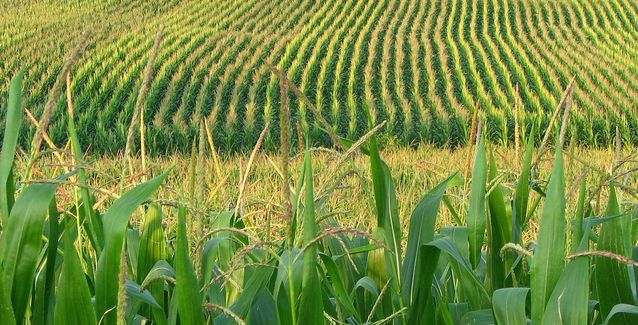Rising corn, soybean prices encouraging more planting in Arkansas
by August 11, 2021 8:08 am 945 views

Corn and soybean prices have been in the doldrums for nearly half a decade, but in early 2021 that changed. Prices surged and it created a shift in row acres across Arkansas, according to data from the U.S. Department of Agriculture’s National Agricultural Statistics Service (NASS).
Cotton and rice prices are relatively stable, but they couldn’t match the potential profits offered by corn and soybeans this year, said Scott Stiles, extension economist for the University of Arkansas System Division of Agriculture.
“For those two markets, price recouped a lot of the losses seen over the past few weeks and returned very close to $6 for corn and $14 for soybeans,” Stiles said. “That’s the backstory for the acreage shifts we’ve seen this year.
“USDA pegs the average farm price for the 2021 corn crop at $5.70 and $13.85 for soybeans — the highest for both since 2012,” he said. “The price outlook is a little better for rice and cotton this year, but not to the extent we’re seeing in corn and soybeans.”
Corn acres ballooned this year from about 620,000 in 2020 to 750,000 acres, spurred by hopes of elevated market prices as the global economy begins to move beyond the COVID-19 pandemic and fuel and animal feed consumption increases.
Nationally, corn acreage increased only slightly, from about 90.9 million acres to about 92.7 million acres. NASS estimates about 730,000 acres of corn will be harvested in Arkansas, although storms and floods during the second week of June in southeastern Arkansas may affect this.
Arkansas growers planted significantly more winter wheat in 2021, increasing acreage from about 145,000 acres in 2020 to 220,000 acres. NASS forecast that 155,000 acres of wheat will likely be harvested this year, more than double the 75,000 acres harvested in the state in 2020. Nationally, winter wheat acreage increased by 10%, from about 30.4 million acres in 2020 to about 33.7 million acres in 2021.
State rice growers planted roughly 18% fewer acres in 2021, falling from 1.46 million acres in 2020 to 1.24 million acres. Nationally, rice acreage fell by 10%, from 3 million acres planted in 2020 to about 2.7 million acres in 2021. This includes long, short and medium grain rice.
Arkansas remains the top rice producing state in the country, growing roughly half of the crop and it remains the state’s top crop export despite the decline in acres.
Jarrod Hardke, extension rice agronomist for the Division of Agriculture, said the reported rice acreage was surprisingly high.
“My expectations remain at about 1.1 million acres of rice for the state,” Hardke said. “While growers made tremendous progress in narrow windows to make it possible, it will be surprising to see the final acreage numbers come in this high in the fall. Maybe the final result will be somewhere in between.”
Arkansas soybean acreage increased by more than 10% in 2021, growing from about 2.8 million acres in 2020 to about 3.1 million acres, with a forecast harvest of more than 3 million acres. Peanut acreage continued its steady growth in Arkansas, increasing from 39,000 acres in 2020 to 40,000 acres in 2021. Peanut acreage declined slightly across the country overall from 1.66 million acres to 1.63 million acres in 2021.
Arkansas growers planted significantly fewer cotton acres in 2021, falling from about 525,000 acres of upland cotton in 2020 to about 410,000 acres in 2021. Nationally, upland cotton acres fell from about 11.9 million acres to close to 11.6 million acres this year. Bill Robertson, extension cotton agronomist for the Division of Agriculture, said the NASS figure of 410,000 acres conflicts with data from the Arkansas Boll Weevil Eradication Foundation, which estimates Arkansas cotton acreage at about 450,000 acres, even with likely crop losses attributable to the June storm and flooding events.
“Poor weather conditions during our planting window resulted in planting delays,” Robertson said. “This coupled with favorable prices for soybeans allowed soybeans to out-compete cotton for acres at planting, resulting in significantly fewer cotton acres in 2021.”
